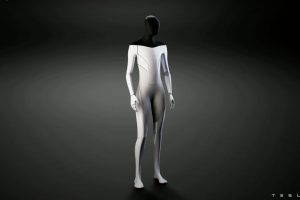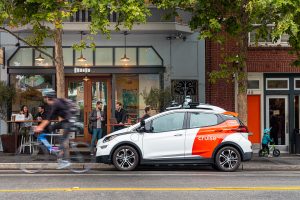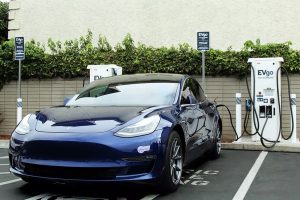- 🚗 Tesla filed a lawsuit against EVject over safety concerns.
- 🔌 EVject’s escape connector is designed to allow drivers to drive away from a Supercharger without leaving the cabin.
- 🌙 The product has been particularly appreciated by women and young drivers for added safety during late-night sessions.
- ⚠️ Tesla claims that EVject lacks overtemperature protection, posing a burn and fire risk.
- 🔥 Testing showed the connector’s surface temperature could reach 100C after 30 minutes of charging.
- 🛡️ EV community is divided; some support Tesla, while others believe collaboration would be better.
- 🧑⚖️ The lawsuit was filed in the US District Court for the Northern District of California.
- 🚫 Critics say Tesla’s action goes against its safety-first reputation.
Navigating the tumultuous waters of innovation and safety, Tesla’s recent lawsuit against EVject has sparked a heated debate among electric vehicle enthusiasts and industry experts alike. This in-depth blog post delves into the intricacies of this legal battle, exploring the merits of both sides, and examining what this means for the future of electric vehicle (EV) safety and aftermarket accessories.
The Crux of the Lawsuit
Tesla recently filed a lawsuit against EVject, an accessory maker well-loved by EV enthusiasts, particularly for its safety escape connector designed to offer drivers a quick escape from Superchargers. Tesla’s complaint, filed in the US District Court for the Northern District of California, alleges that EVject’s product lacks overtemperature protection, creating significant safety hazards. So, what are the key points of contention?
Key Points:
- Safety First: Tesla claims the escape connector poses a high safety risk, potentially leading to burns, fire, and damage to other components.
- Community Appreciation: The EVject connector has been particularly appreciated by women and young drivers for providing an added sense of security during late-night charging sessions.
- Divided Opinions: The lawsuit has resulted in a split within the EV community. While some support Tesla’s action, others advocate for collaboration to improve the product’s safety.
Understanding EVject’s Safety Connector
EVject’s safety escape connector is designed with practicality and quick action in mind. This section aims to provide an in-depth look at what makes this product unique and why it has garnered so much appreciation.
A Nod to Practicality
According to EVject, the primary purpose of the connector is to allow drivers to disconnect and leave a Supercharger without stepping out of their vehicle. This feature has become invaluable for those who may feel vulnerable during nighttime charging sessions.
Noteworthy Features:
- Breakaway Design: The connector’s breakaway feature helps protect both the Tesla charge port and the Supercharger plug from damage during a quick getaway.
- Ease of Use: The simplicity of being able to drive away without stepping out of the vehicle has made this product a hit among certain demographics within the EV community.
The Safety Concerns
While the product itself sounds innovative, Tesla’s accusations of safety lapses are severe and demand close scrutiny. As per Tesla’s testing, the connector’s lack of overtemperature protection makes it a significant hazard.
Safety Issues Highlighted by Tesla:
- Temperature Concerns: Testing revealed that the connector’s surface temperature could reach up to 100C after 30 minutes of charging, posing a burn risk.
- Fire Risk: High temperatures also elevate the risk of igniting other combustible materials, making it a potential fire hazard.
Community Divide: Supporters and Critics
The lawsuit against EVject has elicited strong reactions, both supporting and opposing Tesla’s stance.
Arguments in Favor of Tesla
- Safety Concerns: Supporters argue that Tesla’s commitment to safety is paramount, and any product that falls short should be held accountable.
- Brand Protection: Supporters believe that allowing potentially hazardous products could damage Tesla’s brand reputation and user trust.
Arguments Against Tesla
- Innovation Stifling: Critics argue that Tesla should work with EVject to improve the product rather than stifle innovation through legal means.
- Consumer Safety: Some believe that the connector offers real-world safety benefits, especially for vulnerable demographics during nighttime charging.
Implications for the EV Industry
This lawsuit has broader implications for the EV industry, particularly concerning aftermarket accessories and consumer safety.
Setting a Precedent
Tesla’s actions could set a precedent for how safety concerns are handled in the burgeoning field of EV aftermarket accessories.
Potential Outcomes:
- Stricter Regulations: We could see stricter safety regulations for EV accessories, ensuring that they meet high safety standards.
- Collaborative Innovation: Manufacturers might be encouraged to collaborate more closely with automakers to ensure product safety without stifling innovation.
- Consumer Awareness: Increased awareness among consumers about the importance of using safe and certified products.
Conclusion
Tesla’s lawsuit against EVject is a landmark case that highlights the delicate balance between safety and innovation. While Tesla’s concerns are valid, there is also a strong case for collaboration and innovation. The outcome of this lawsuit will not only impact the companies involved but could also shape the future of EV aftermarket accessories and consumer safety standards.





